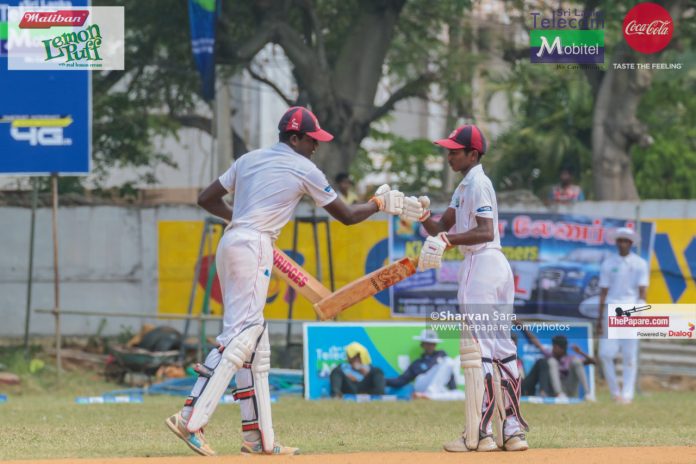At Temple Trees the other day, some of cricket’s finest brains talked a lot of sense. One sentiment that all of them echoed was the need to look after school cricket, the cradle of the great game.
The cricketing world marvels at our school cricket structure. Not even two World Wars, a 30 year civil war and now COVID-19 could stop the Battle of the Blues that has been played uninterrupted since 1879. Not even Eton versus Harrow can boast of such feat. Celebrated cricket writer Christopher Martin-Jenkins was so fascinated by the Roy-Tho that he skipped one day’s play of a Test match between Sri Lanka and England in 1993 and spent time watching the Big Match and came up with a fine piece for the London Times.
The interest for the game went through the roof after the 1996 World Cup and the number of schools that engage in the game must have increased by ten fold. Ian Chappell, an astute captain and a keen student of the game, was stunned when he saw boys playing the sport in every nook and corner during one of his visits after the World Cup. What Chappell didn’t know was that street cricket was a part of Sri Lankan culture and that we play ‘one bump’ even at offices. What he didn’t see was that the interest for organized cricket had gone sky high.
Cricket is England’s national game but football is their most popular sport. On the other hand, volleyball is Sri Lanka’s national sport but cricket is our most popular sport. Cricket is also an expensive game – a game that most Sri Lankans parents can ill afford.
Video – “ගොඩක් රටවල්වල පාලක මණ්ඩලයට ක්රීඩාංගණ අයිති නැහැ” – සංගක්කාර
A season of First Eleven cricket is a costly affair. A school has to allocate a sum of Rs. 150,000 for just one game of the First Eleven team if they are the hosts. Expenses range from food, accommodation, umpires’ fees, scorers’ fees, balls et cetera. That is if the school owns a ground and if not, they have got to spend an additional Rs. 60,000 as any decent ground costs at least Rs. 30,000 a day.
Certain schools with strong old boys’ organizations both at home and overseas are able to meet these costs but there are other schools that struggle to make ends meet.
Maintaining four age group teams at school levels is not something all schools can afford. Not just outstations, even the schools in Colombo are unable to survive and what happens then is for schools to pass the buck onto the parents. This leads to too many complications at schools and the most common among them is allegations of favouritism.
Sri Lanka Cricket has done much providing cricket equipment, bowling machines and other essential items to deserving schools but it is money that schools need most to keep up with daily activities.
One problem that SLC encounters is that they cannot directly get involved with schools as they come under the Schools Cricket Association. But surely when the need is felt so badly there must be some path to bring schools under the direct purview of SLC.
Bangladesh has not got any organized cricket in schools, yet, they won the ICC Under-19 World Cup a few months ago. They must be extremely proud for winning the prestigious title despite little organized cricket. Here we have a superb, tried and tested system in place and it only needs bit of fine tuning and a lot of money.
SLC did a fine job a couple of years ago to create interest among girls at schools to take up the sport by sponsoring several Big Matches. This created much interest for the game among girls and SLC has to do something to help boys’ schools too.
You can see some schools being pushed to the brink and they survive only because an enthusiastic coach spends his own money for expenses. But life at times is so cruel that often philanthropist versus reality is no contest.
To start with SLC can do something simple as this. They can take care of the match payments of all umpires and scorers in order relieve some burden on the schools and a comprehensive release package can be looked into later.
Video – “පිට පළාත්වලට අපි හරියට පහසුකම් දීලා නැහැ” – මහේල
More importantly, our school cricket structure is outdated and some meaning has to be added there. That is the reason we struggle in ICC Undre-19 World Cups putting up pathetic shows repeatedly despite having a stable structure. Since Malintha Gajanayake skippered our under-19 players to a final 20 years ago, we are yet to reach a Youth World Cup final.
Time was when we had players walking into the national team straight from the school. After all, Sri Lanka’s first half-century in Test cricket was scored by a schoolboy. The trend that was started from Anura Tennekoon in mid 1960s ceased to exist after Farveez Maharoof, who had a dream debut series in Zimbabwe in 2004. Glad that school cricket has received the attention that it urgently needed.















